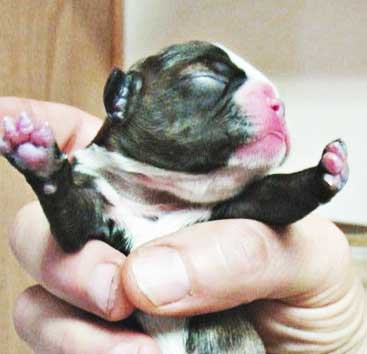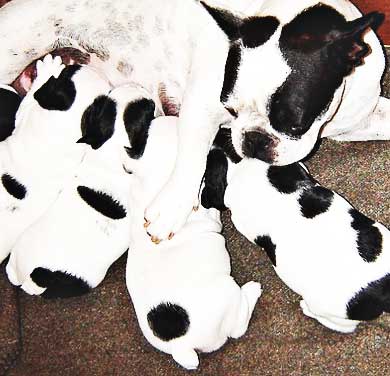Have you ever wondered what the longest time between puppies being born is? Well, it turns out that when it comes to canine pregnancies, the answer can vary greatly. Some breeds of dog can carry their litters for as long as 70 days. While other breeds may be ready to deliver in just two or three weeks. The record for the longest gestation period belongs to a Boxer who went an incredible 81 days before giving birth!
This amazing feat begs the question: why do some dogs take so much longer than others? And what are the implications of such a lengthy pregnancy on both mother and puppies? In this blog post, we’ll explore these questions and more as we look at the fascinating world of canine pregnancies. So come with us on this journey and learn all about one of nature’s most remarkable mysteries!
What if there is more than 4 hours between puppies?
One of the most unique aspects of canine pregnancies is that they are often be broken into multiple stages. During each stage, the mother and her puppies will experience different things.
For example, during what’s known as the “prolonged interval” (which occurs between puppies being born). There may be more than four hours between births! This means that if a litter consists of six puppies, it could take up to 24 hours for all six babies to be born.
This extended time period sets canine pregnancies apart from those of other mammals. With humans and cats, all the offspring are usually born within an hour or two at most. However, with dogs this isn’t always the case.
Another interesting thing to note is that during the prolonged time interval, the mother will usually rest and sleep during some parts of labor. This gives her a chance to regain strength in this time before delivering the next pup. This shows just how hard dogs work when they are pregnant. Even though they may be taking more time than other animals, their bodies still need adequate rest in order to keep going!
So if you find yourself with an expectant canine companion, don’t be alarmed if there are several hours between puppies being born. It’s completely normal for some breeds of dog and doesn’t mean anything is wrong – it’s simply a part of nature!

How long can a puppy be stuck in the birth canal?
If you have waited the longest time between puppies being born and think something is wrong, consult your vet. This is an important question to consider when it comes to canine pregnancy. This is because, unlike human babies, puppies are not always able to pass through the birth canal on their own.
If a puppy becomes stuck in the canal for too long, it can lead to serious health complications for both mother and pup.
When possible, veterinarians will try to help free the pup through manual manipulation or even surgery if needed. However, this is not always an option. In cases where the puppy has been stuck for more than two hours, humane euthanasia may be necessary.
How can I help my dog push her puppies out?
In most cases, it’s best to let the mother do all the work. She knows her body best and will instinctively know what to do when it’s time to push. However, if she seems to be having difficulty or if you’re worried about her safety or that of the puppies. There are a few things you can do.
First, make sure that your dog is in a comfortable position on her side with plenty of support from pillows or towels. You should also provide a warm environment for her, as this can help relax her muscles and make pushing easier. Additionally, gently rubbing the mother’s stomach in circular motions can help encourage contractions and aid in delivery. Finally, talk softly to your dog throughout.
Signs of dead puppies in the dog’s womb
It’s important to be aware of the signs that a puppy may have died in utero. If the mother is having difficulty delivering or if there are long gaps between puppies, this may indicate a dead pup in her womb. Other signs include an enlarged abdomen, foul-smelling discharge and lack of fetal movement during an ultrasound.
If you suspect a deceased puppy, it is important to seek veterinary assistance immediately as leaving them in the womb can lead to serious complications for your dog.
In summary, canine pregnancies can be incredibly fascinating and complex processes. From extended intervals between puppies to difficulties with delivery, there are many things that can happen along the way. It’s important to stay informed so that if any problems arise, you can take the necessary steps to ensure the health and safety of both mother and pups.
What are some of the risks associated with canine pregnancy?
Although a dog’s pregnancy is usually a normal, healthy process there can be potential risks involved depending on factors such as breed size and age of mother. Common problems include infection (both urinary tract and uterine), eclampsia (a life-threatening condition caused by low calcium levels. Also dystocia (difficult labor).
It’s important for owners to keep their vet updated about the progress of their dog’s pregnancy so any potential problems can be identified early and treated accordingly.

What steps should a pet owner take to ensure their dog has a successful pregnancy?
The key to ensuring a safe, healthy canine pregnancy is to provide your pet with proper care before and during her gestation period. This includes feeding her a balanced diet. It also involves providing plenty of exercise, keeping up with vaccinations, taking regular trips to the vet, and monitoring her weight gain.
Additionally, it’s important that she receive adequate rest as fatigue can put extra strain on both mother and puppies. If there is a the longest time between puppies being born then it may sometimes indicate a problem.
Finally, if your dog is pregnant for an unusually long period of time, be sure to consult with your vet as soon as possible so any potential risks can be identified and addressed.
By following the steps outlined above, you can help ensure that your pet’s pregnancy is a safe and successful one!
